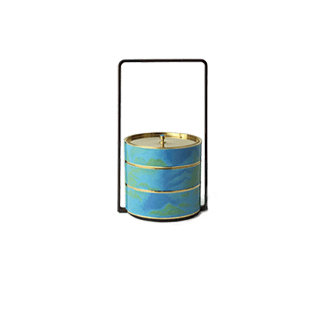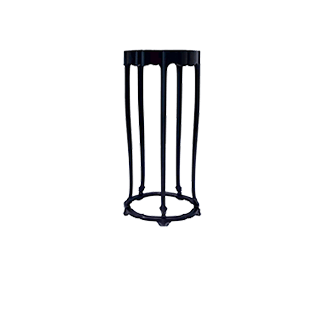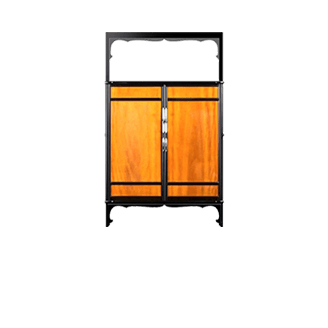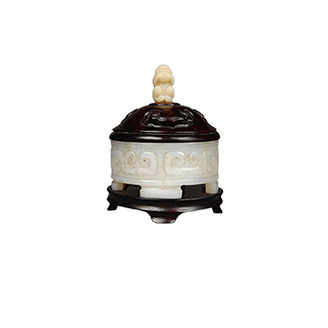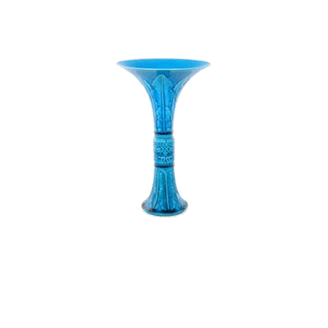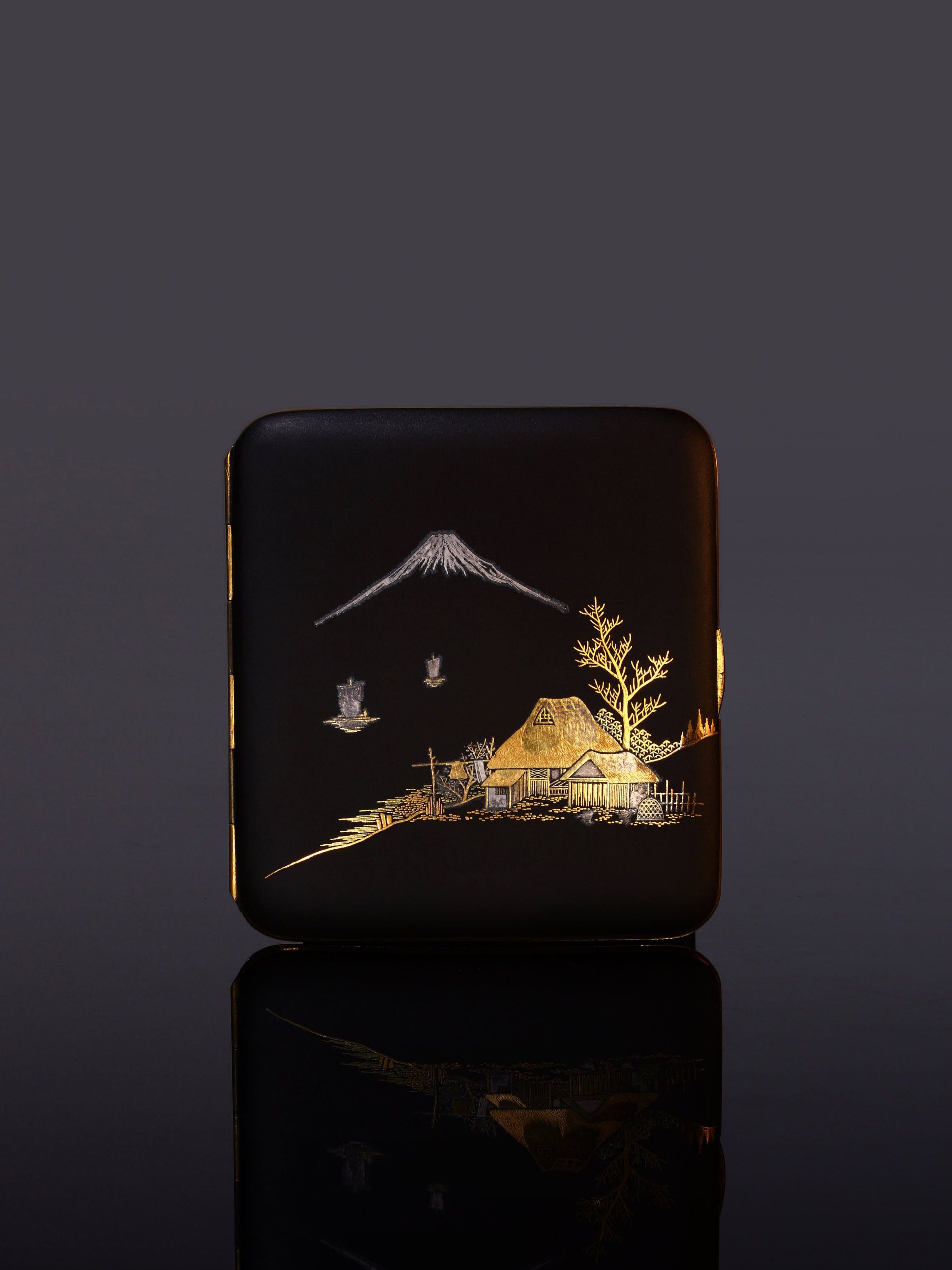

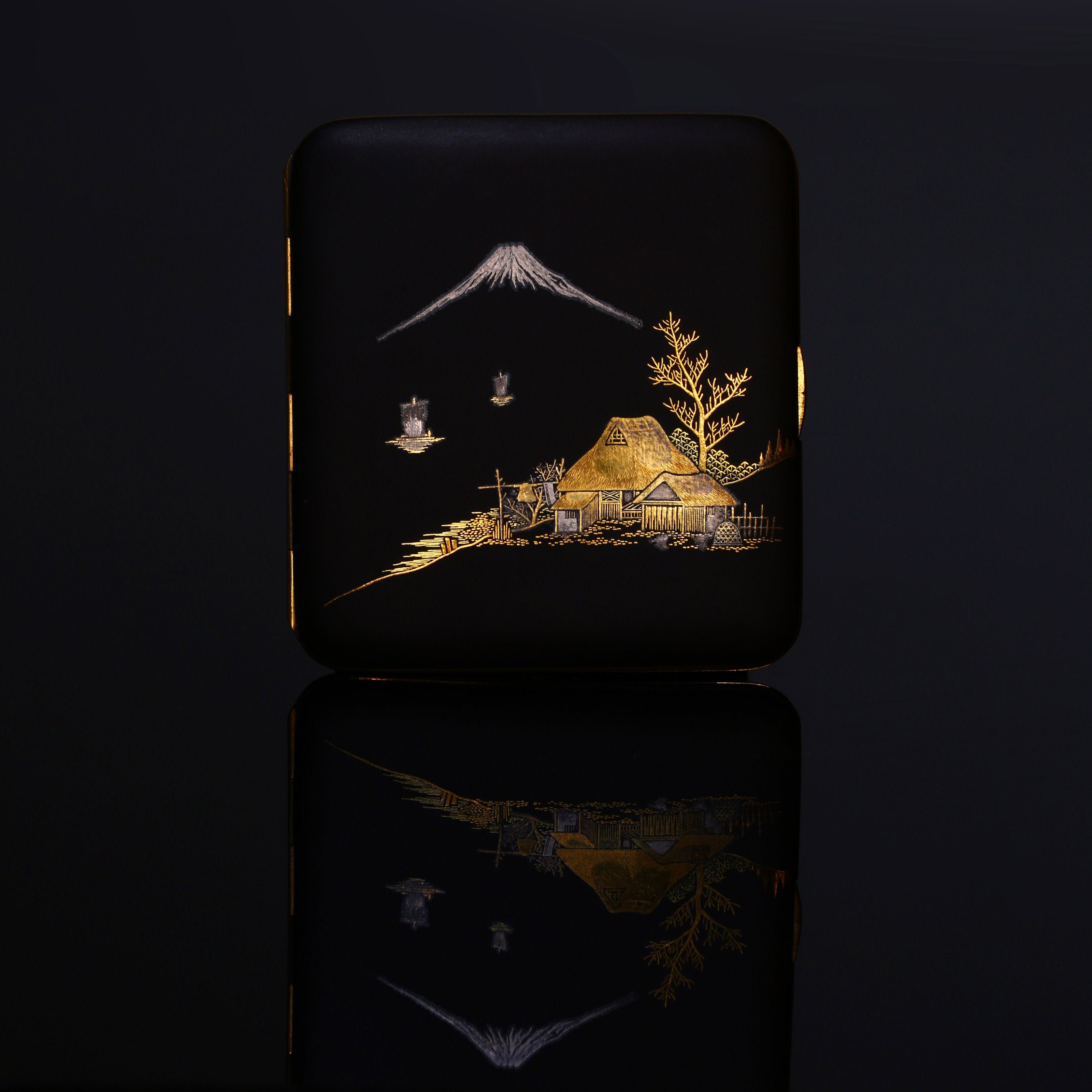

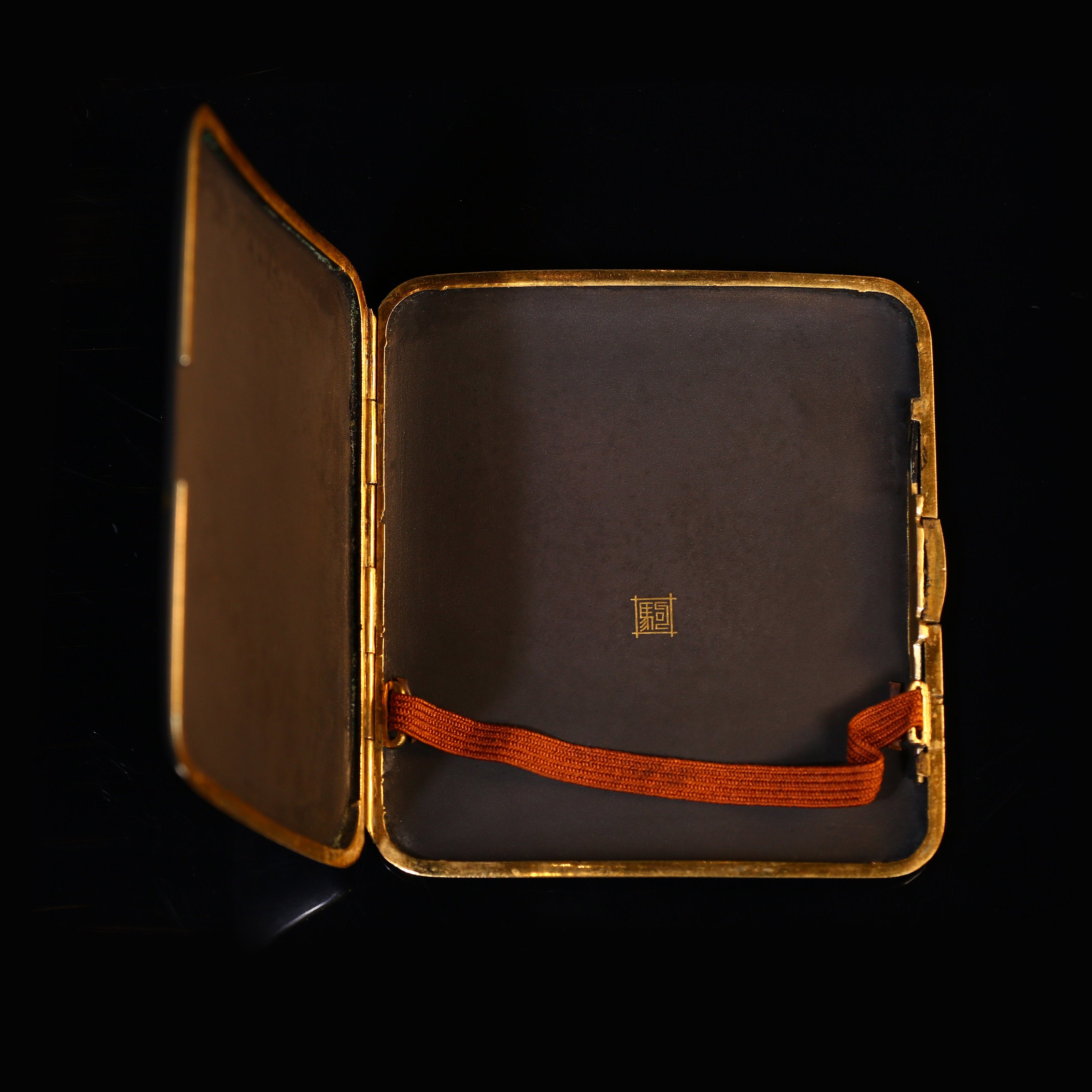

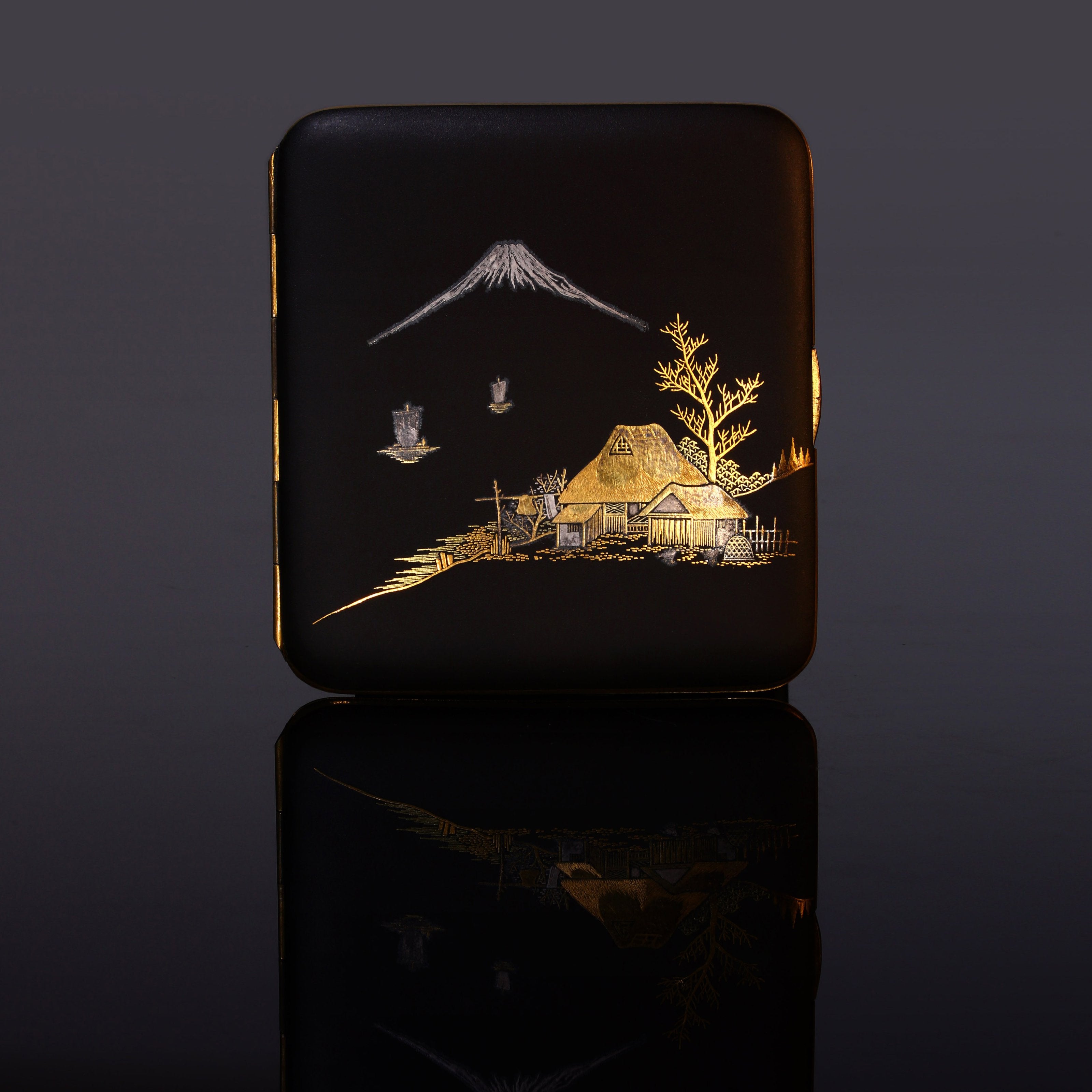
Komai Ironworks Inlaid Gold "River Boat Fire Shines Alone" Cigarette Box









Komai Ironworks Inlaid Gold "River Boat Fire Shines Alone" Cigarette Box
Komai Ironworks Inlaid Gold "River Boat Fire Shines Alone" Cigarette Box
Komai Ironworks Inlaid Gold "River Boat Fire Shines Alone" Cigarette Box
Length: 8cm, Width: 8.8cm, Thickness: 1cm
Komai Iron Inlaid Gold "River Boat Fire Shines Alone" Cigarette Box
Meiji period
The cigarette box is made using the iron-inlaid-gold technique. The front of the box features two thatched cottages by the river, with a neat courtyard, pebbled ground, and tranquil water. Only two distant sails are visible on the river, and the silvery mountains stretch into the distance. The back features a lone sail and water birds, creating a serene and ethereal river scene. The edges are gold-plated, and the interior bears the Chinese character "驹" (ju).
Komai Otojiro (1842-1917) was Kyoto's foremost master of gold and silver inlay, renowned for his unique technique known as fumo inlay. Due to the distinctive style and special techniques of his work, his fumo inlay is also referred to as Komai inlay. The Komai family had been swordsmiths in Kyoto for generations. At the age of thirteen, he apprenticed under Misaki Shusuke to learn inlay. After the abolition of swords in Meiji 9 (1889), he began to transform his gold and silver inlay work into decorative items, ornaments, and vases favored by Westerners, targeting the overseas market. His work won numerous awards at the 1903 National Industrial Exposition, the 1904 Louisiana Exposition, and the 1905 Liège World's Fair in Belgium. The Komai family's craftsmanship is renowned for its exquisite carving and inlay techniques on gold and silver surfaces.
Length: 8cm, Width: 8.8cm, Thickness: 1cm
Komai Iron Inlaid Gold "River Boat Fire Shines Alone" Cigarette Box
Meiji period
The cigarette box is made using the iron-inlaid-gold technique. The front of the box features two thatched cottages by the river, with a neat courtyard, pebbled ground, and tranquil water. Only two distant sails are visible on the river, and the silvery mountains stretch into the distance. The back features a lone sail and water birds, creating a serene and ethereal river scene. The edges are gold-plated, and the interior bears the Chinese character "驹" (ju).
Komai Otojiro (1842-1917) was Kyoto's foremost master of gold and silver inlay, renowned for his unique technique known as fumo inlay. Due to the distinctive style and special techniques of his work, his fumo inlay is also referred to as Komai inlay. The Komai family had been swordsmiths in Kyoto for generations. At the age of thirteen, he apprenticed under Misaki Shusuke to learn inlay. After the abolition of swords in Meiji 9 (1889), he began to transform his gold and silver inlay work into decorative items, ornaments, and vases favored by Westerners, targeting the overseas market. His work won numerous awards at the 1903 National Industrial Exposition, the 1904 Louisiana Exposition, and the 1905 Liège World's Fair in Belgium. The Komai family's craftsmanship is renowned for its exquisite carving and inlay techniques on gold and silver surfaces.







Frequently asked questions
Use the FAQ section to answer your customers' most frequent questions.
Order
Yes, we ship all over the world. Shipping costs will apply, and will be added at checkout. We run discounts and promotions all year, so stay tuned for exclusive deals.
It depends on where you are. Orders processed here will take 5-7 business days to arrive. Overseas deliveries can take anywhere from 7-16 days. Delivery details will be provided in your confirmation email.
You can contact us through our contact page! We will be happy to assist you.





